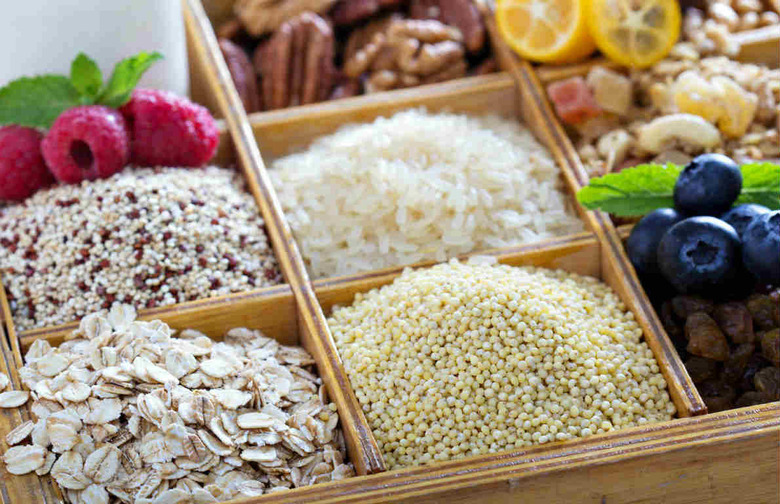Clean Eating Kitchen Staples
The term "clean eating" has become quite popular these days, but many people still aren't exactly sure what the phrase means. Clean eating isn't a diet; it's a lifestyle, an approach to eating that incorporates wholesome and minimally processed and that avoids chemicals and harmful preservatives or additives. Making the switch to clean eating is a great choice for your overall health and it's easy to do if you know how to make a few simple substitutions when you're cooking.
One of my primary goals with the recipes in my cookbook, Dashing Dish, is to keep them simple, quick, and made with a few basic ingredients that most people already keep in their kitchens. If you're not familiar with clean eating but are ready to give it a try, I suggest that you start by making some of the pantry swap-outs below. Then, consider incorporating my list of suggested pantry and fridge staples into your own grocery list — all of these items are easy to find in your average grocery store, and can be used to prepare a number of delicious "clean" dishes.
Try these simple pantry swap-outs:
Stevia or honey instead of white sugar
In baking, use a 2:1 ratio — for every two cups of sugar, use one cup of baking Stevia.
Oat flour instead of white flour
You can make your own by blending oats in a food processor to flour-like consistency. Use the same amount of oat flour as you would any other flour (or a 1:1 ratio).
High-fiber pasta or quinoa instead of white pasta
Sneaking more fiber into your meals will help you stay fuller longer (which can help you eat fewer calories over the course of the day).
Olive oil, plain low-fat Greek yogurt, or unsweetened applesauce instead of butter
When you're baking, you can replace butter with an equal amount of applesauce. When you're sautéing on the stovetop, replace butter with an equal amount of olive oil. I also use Greek yogurt in place of sour cream (and in recipes that might traditionally call for butter) to add fat, creaminess, and flavor; try Greek yogurt blended with mashed potatoes, stirred into soups, and in all your favorite Mexican recipes.
Then, stock your pantry with these clean eating staples:
Protein and Meats
Boneless, skinless chicken breasts
Extra-lean ground turkey or beef
Lean pork tenderloin
Salmon and tilapia
Beans (garbanzo, black, kidney, white)
Protein powder (such as Vanilla Designer Whey — I use in often in desserts)
Eggs (and egg whites)
Dairy
Cheese (grated Parmigiano, thin-sliced or shredded reduced-fat Cheddar, feta, thin-sliced Swiss)
Low-fat cottage cheese
Plain low-fat or nonfat Greek yogurt
Unsweetened almond milk (or low-fat milk)
Breads, Grains, and Flours
Almonds and almond flour
Ezekiel bread and whole grain bread
High-fiber wraps (such as La Tortilla)
Oat flour
Old-fashioned oats (use gluten-free if sensitive)
Peanut flour
Quinoa and whole-grain rice
Fruits and Vegetables Available Year-Round
Avocados
Bananas
Bell peppers
Broccoli
Cauliflower
Lettuce
Onions
Spinach
Sweet potatoes
Warm-Weather Fruits and Vegetables
Berries
Corn
Summer squash
Tomatoes
Zucchini
Cold-Weather Fruits and Vegetables
Apples
Butternut squash
Hearty greens like collards
Pumpkins
Spaghetti squash
Everyday Seasonings, Condiments, and Other
Chili powder
Ground cinnamon
Honey and low-sugar maple syrup
Italian seasoning (or a blend of dried basil and dried oregano)
Minced garlic and garlic powder
Onion powder and dried minced onion
Parsley (fresh or dried)
Prepared mustard
Pumpkin and apple pie spice
Taco seasoning (or a blend of cumin, chili seasoning, and salt)
Unsweetened cocoa powder
Katie Farrell, RN, is the author of two cookbooks. For more information, visit www.dashingdish.com
